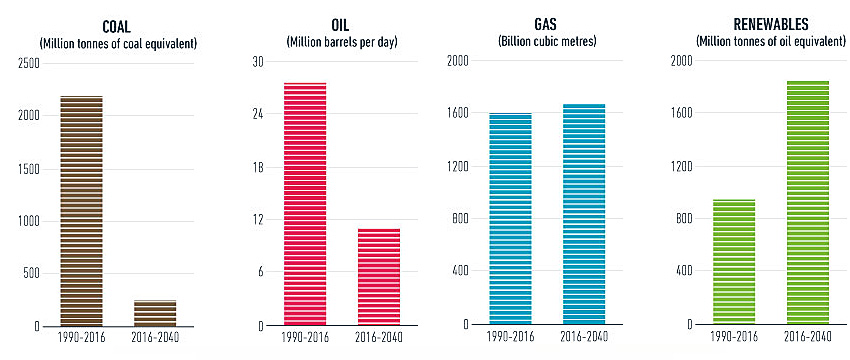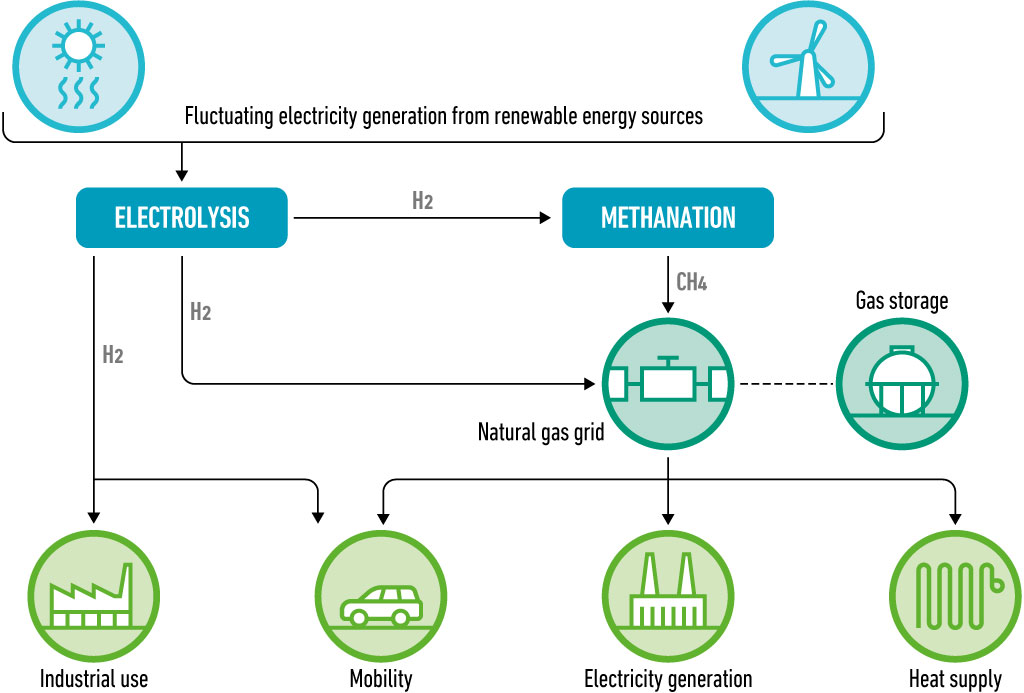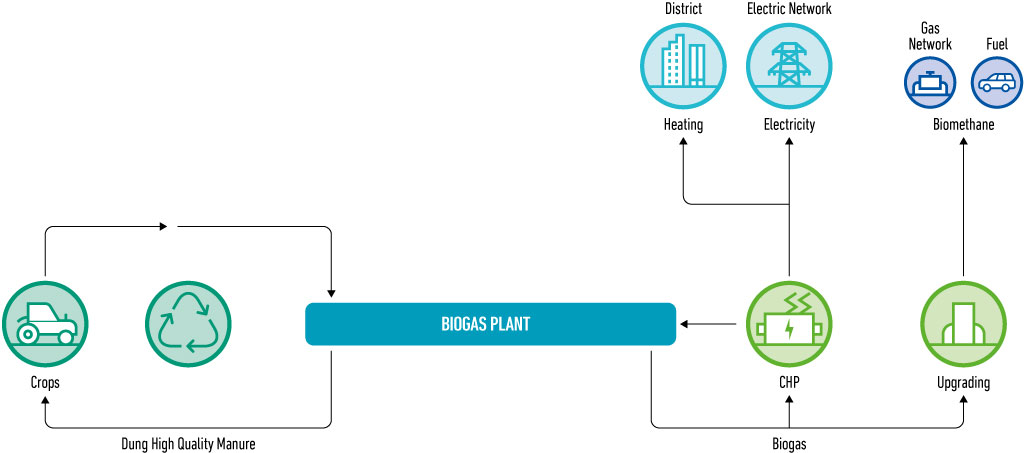Renewable Gas for Decarbonization
In September 2015, over 150 world leaders came together at the UN to approve the 2030 Agenda for Sustainable Development, comprising 17 crucial objectives (Sustainable Development Goals) for the future of planet Earth and for human kind. Some are focused on combatting poverty, inequality and social and economic underdevelopment, while others are dedicated to issues regarding the climate and energy. In particular, points 7 and 13 state: "Ensure access to affordable, reliable, sustainable and modern energy for all" and "Take urgent action to combat climate change and its impacts". Natural gas can play a positive and critical role in the inevitable process of gradual decarbonisation around the world. Science and technology have already helped to identify new uses for gas (biomethane, power-to-gas) with objective advantages regarding the environment, but this innovation also encompasses already-stable sectors like LNG, which can finally be distributed more extensively thanks to new transportation methods ( small-scale LNG). Natural gas is thus on the verge of becoming a major player in this transition in the sphere of the so-called "sustainable energy mix".
- IEA (International Energy Agency), World Energy Outlook 2017;
- SNAM, Global Gas Report 2017; Natural gas for decarbonisation - 2016 Sustainability Report;

Natural gas, according to current knowledge, is the only fuel which, together with nonprogrammable renewable resources such as wind and photovoltaic power, can guarantee an efficient global decarbonisation process, contributing to sustainability of the future energy supply.
This is because gas is a versatile product which can be used as an energy source for domestic uses, for generating electricity, for industrial uses and as a fuel for transportation by road and by sea. Greater use of gas in its various forms would translate into fewer emissions of sulphur dioxide, nitrogen oxides and particulate matter, with a decisive impact on fighting air pollution in cities.
Gas is an accessible source, given the presence of considerable reserves worldwide and the development of the liquefied natural gas global market which has increased availability at low prices.
Lastly, the gas system can count on existing transportation, storage and distribution systems and is capable of supporting decarbonisation guaranteeing the energy system flexibility, programmability and cost effectiveness.
While research slowly advances for the process of making renewable resources more efficient, natural gas is itself becoming a key pillar of a sustainable energy mix.
One of the most important parameters is the emission of pollutants like sulphur dioxide, nitrogen oxides and particulates which, similar to generated calorific value, are always lower when it comes to natural gas.
The same can be said for carbon dioxide, an important greenhouse gas: just like heat produced by the combustion of natural gas, it emits up to 50% less CO2 into the environment compared to coal and around 20-30% less than oil.
There are also advantages related to the type of use for natural gas, such as cogeneration (the simultaneous production of heat and electricity), and to established technologies, like condensing boilers (up to 110% more efficient) and gas-powered heat pumps, which are even more efficient (up to 170%).
Gas heat pumps are the most immediate and effective solution to fight air pollution, improve energy efficiency and promote the use of renewable sources in air conditioning. This technology leverages transportation, storage and distribution infrastructure to enhance the role of natural gas, and eventually biomethane, in enabling the use of renewables in buildings, in line with the COP 21 targets. Gas heat pumps allow primary energy savings of more than 40% compared to conventional gas boilers through the recovery of renewable energy from the external environment. They also cut over 30% of heating operating costs for final customers and allow for a substantial reduction in carbon dioxide emissions. These advantages have been detailed in a position paper jointly developed by the gas heat pump industry, the Politecnico di Milano university and the main gas infrastructure operators in Italy, including Snam.
This technology envisages using synthetic gas to store excess electricity production from intermittent renewable sources such as wind and solar. The process involves the use of electricity surpluses to split water into hydrogen and oxygen. Hydrogen can then be combined with carbon dioxide to convert the two gases to methane. The methane may then be fed into the natural gas grid and storage facilities.
Power-to-gas may be integrated in the process to upgrade biogas into biomethane, which results in surplus CO2 which can be mixed with the hydrogen produced through electrolysis.

Carbon capture and storage (CCS) has long been considered a potential solution to emissions from all fossil fuels. The technology is relatively simple in concept, entailing the capture of greenhouse gas emissions from a point source and long term storage in underground reservoirs.
However, the applied demonstration of the technology has been slow and difficult to achieve on a material scale. Currently, there are 15 operational projects globally processing 30 million tonnes of CO2 per year, but this is a small portion of the potential that would be required for material mitigation impact.
Ultimately cost would need to come down to make this technology more competitive with other abatement approaches. There are also some constraints with the availability of storage structures and the fact that offshore locations are more socially acceptable.

Biogas is a renewable and programmable source in addition to solar and wind power. Biomethane is obtained from anaerobic digestion, in special plants, of agricultural and agro-industrial by-products through a biogas upgrading process. It can already be injected into the network and used in all the sectors where gas is present and can also be used as a fuel for road haulage.
The increase in its use could make it possible to meet decarbonisation targets, exploiting existing networks and promoting a significant increase in domestic production. The production process can make a contribution to significantly reducing emissions in the agricultural industry and restoring soil organic matter: the digestate (what remains after the anaerobic digestion of the agricultural matter) is actually an excellent natural fertiliser. Furthermore, through the use of micro-liquefaction plants, biomethane derived from agricultural and livestock residues can be processed to obtain a "locally-produced" LNG.

The Gas for Climate group, consisting of seven leading European gas transport companies (Enagás, Fluxys Belgium, Gasunie, GRTgaz, Open Grid Europe, Snam and Teréga) and two renewable gas industry associations (European Biogas Association and Consorzio Italiano Biogas) committed to achieve net zero greenhouse gas emissions in the EU by 2050, commissioned Ecofys, a Navigant company, to prepare a study into the future role of gas in a net-zero emissions energy system. The study shows that it is possible to scale up renewable gas production between now and 2050 to more than 120 billion cubic metres annually, including both renewable hydrogen and biomethane. Using this renewable gas in existing gas infrastructure for the heating of buildings, to produce dispatchable electricity as a complement to wind and solar, and to fuel heavy transport, could save about €140 billion annually by 2050 compared to a future energy system without any gas.